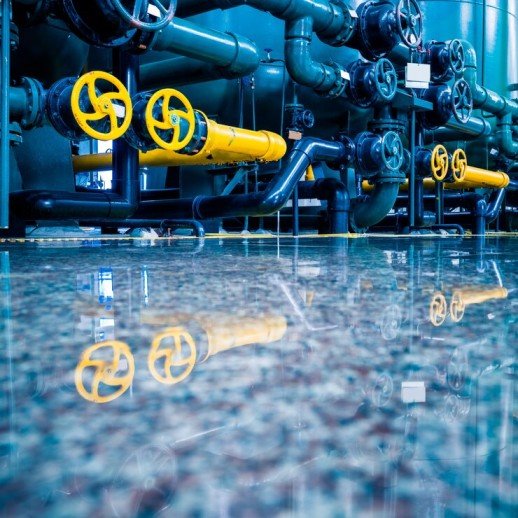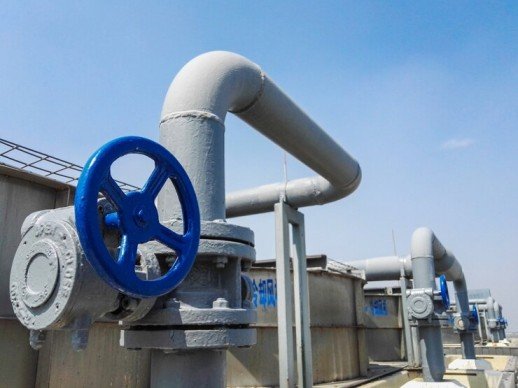In the realm of fluid handling systems, the PVDF Pump Technology out as a versatile and durable solution for various industrial applications. PVDF, or polyvinylidene fluoride, is a thermoplastic fluoropolymer known for its exceptional chemical resistance, mechanical strength, and thermal stability. When engineered into a pump, PVDF exhibits superior performance in handling corrosive and abrasive fluids, making it a preferred choice across industries such as chemical processing, pharmaceuticals, water treatment, and more.
What is a PVDF Pump?
A PVDF pump is a type of centrifugal pump constructed using polyvinylidene fluoride as the primary material for its casing, impeller, and other critical components. This material’s inherent properties make the pump highly resistant to a wide range of chemicals, including acids, alkalis, solvents, and halogens. As a result, PVDF pumps are widely utilized in industries where aggressive or corrosive fluids need to be handled with efficiency and reliability.
Components of a PVDF Pump
1. Casing:
The casing of a PVDF pump is typically made from injection-molded PVDF, which provides excellent resistance to chemical corrosion and thermal degradation. The robust construction of the casing ensures the integrity of the pump even when exposed to harsh operating conditions.
2. Impeller:
The impeller, responsible for generating the centrifugal force to move the fluid, is also crafted from PVDF. This material’s high strength and stiffness allow the impeller to withstand the forces exerted during operation while maintaining dimensional stability over time.
3. Shaft:
The shaft of a PVDF pump is usually made from stainless steel or other corrosion-resistant alloys to ensure reliable performance and longevity. It connects the motor to the impeller and transmits rotational motion, facilitating the fluid transfer process.
4. Seals:
Sealing systems in PVDF pumps are crucial for preventing leakage and maintaining fluid integrity. Various types of seals, including mechanical seals and gaskets, are employed depending on the specific requirements of the application. Special attention is given to selecting materials compatible with PVDF and the fluid being pumped to ensure optimal performance and longevity.
Know More About : PVDF Chemical Tanks

Key Features and Advantages
PVDF pumps offer several key features and advantages that set them apart from other types of pumps:
- Chemical Resistance: PVDF is inherently resistant to a wide range of chemicals, including acids, bases, solvents, and oxidizing agents. This makes PVDF pumps suitable for handling corrosive fluids without the risk of degradation or contamination.
- Thermal Stability: PVDF exhibits excellent thermal stability, allowing PVDF pumps to operate efficiently over a broad temperature range without losing mechanical integrity or dimensional stability.
- Abrasion Resistance: In addition to chemical resistance, PVDF is also highly resistant to abrasion, making PVDF pumps ideal for handling abrasive slurries and particles suspended in the fluid.
- Non-reactive: PVDF is non-reactive with most substances, ensuring that the pumped fluid remains uncontaminated and free from unwanted reactions or interactions.
- Lightweight: Despite its robustness, PVDF is relatively lightweight compared to metals such as stainless steel or cast iron, making PVDF pumps easier to install, handle, and transport.
- Low Maintenance: Due to their corrosion resistance and durable construction, PVDF pumps require minimal maintenance compared to pumps made from traditional materials. This results in reduced downtime and lower operating costs over the pump’s lifespan.

Applications of PVDF Pumps
PVDF pumps find widespread use in various industrial applications where the handling of corrosive or abrasive fluids is required. Some common applications include:
- Chemical Processing: In industries such as petrochemicals, pharmaceuticals, and specialty chemicals, PVDF pumps are used for transferring acids, alkalis, solvents, and other corrosive chemicals.
- Water Treatment: Municipal water treatment plants and industrial facilities utilize PVDF pumps for processes such as chemical dosing, filtration, and wastewater treatment, where resistance to harsh chemicals is essential.
- Electroplating: In electroplating operations, PVDF pumps are employed for circulating plating solutions containing acids, metal salts, and other corrosive compounds.
- Semiconductor Manufacturing: Semiconductor fabrication facilities utilize PVDF pumps for handling etching solutions, photoresists, and other chemicals used in the manufacturing process.
- Mining and Metallurgy: PVDF pumps are utilized in mining and metallurgical processes for transferring abrasive slurries, leachates, and chemical reagents in harsh environments.
Considerations for Selecting a PVDF Pump
When choosing a PVDF pump for a specific application, several factors should be taken into account to ensure optimal performance and reliability:
- Chemical Compatibility: Verify that the pump materials are compatible with the fluids being handled to prevent chemical attack or degradation.
- Temperature Range: Consider the operating temperature range of the pump and ensure that it aligns with the temperature requirements of the application.
- Flow Rate and Pressure: Determine the required flow rate and discharge pressure to select a pump that can meet the performance demands of the system.
- Operating Conditions: Consider factors such as suction lift, NPSH (Net Positive Suction Head), and installation orientation to ensure proper pump operation under all conditions.
- Maintenance Requirements: Evaluate the ease of maintenance and availability of spare parts to minimize downtime and maintenance costs over the pump’s lifespan.
Conclusion
PVDF pumps offer a reliable and efficient solution for handling corrosive and abrasive fluids across various industrial applications. With their exceptional chemical resistance, thermal stability, and durability, PVDF pumps provide unmatched performance and reliability in challenging environments. By understanding the key features, advantages, and considerations associated with PVDF pumps, engineers and operators can make informed decisions when selecting and deploying these pumps in their respective systems.
Frequently Asked Questions (FAQ) about PVDF Pumps
Q: What is a PVDF pump?
A: A PVDF pump is a type of centrifugal pump constructed using polyvinylidene fluoride (PVDF) as the primary material for its casing, impeller, and other critical components. PVDF is a thermoplastic fluoropolymer known for its exceptional chemical resistance, mechanical strength, and thermal stability.
Q: What are the advantages of PVDF pumps?
A: PVDF pumps offer several advantages, including:
- Chemical resistance: PVDF is resistant to a wide range of chemicals, making PVDF pumps suitable for handling corrosive fluids.
- Thermal stability: PVDF pumps can operate efficiently over a broad temperature range without losing mechanical integrity.
- Abrasion resistance: PVDF is highly resistant to abrasion, making PVDF pumps ideal for handling abrasive slurries.
- Non-reactive: PVDF is non-reactive with most substances, ensuring that the pumped fluid remains uncontaminated.
- Lightweight: PVDF pumps are relatively lightweight compared to metal pumps, making them easier to handle and transport.
- Low maintenance: PVDF pumps require minimal maintenance due to their corrosion resistance and durable construction.
Q: What are the common applications of PVDF pumps?
A: PVDF pumps are used in various industrial applications, including chemical processing, water treatment, electroplating, semiconductor manufacturing, mining, and metallurgy. They are employed for transferring corrosive or abrasive fluids in environments where traditional pumps may fail.
Q: How do I select the right PVDF pump for my application?
A: When selecting a PVDF pump, consider factors such as chemical compatibility, temperature range, flow rate, pressure requirements, operating conditions, and maintenance requirements. It’s essential to choose a pump that can meet the specific performance demands and environmental challenges of your application.
Q: Are PVDF pumps easy to maintain?
A: Yes, PVDF pumps are relatively easy to maintain due to their corrosion resistance and durable construction. Regular inspection and preventive maintenance can help ensure optimal performance and extend the pump’s lifespan.

